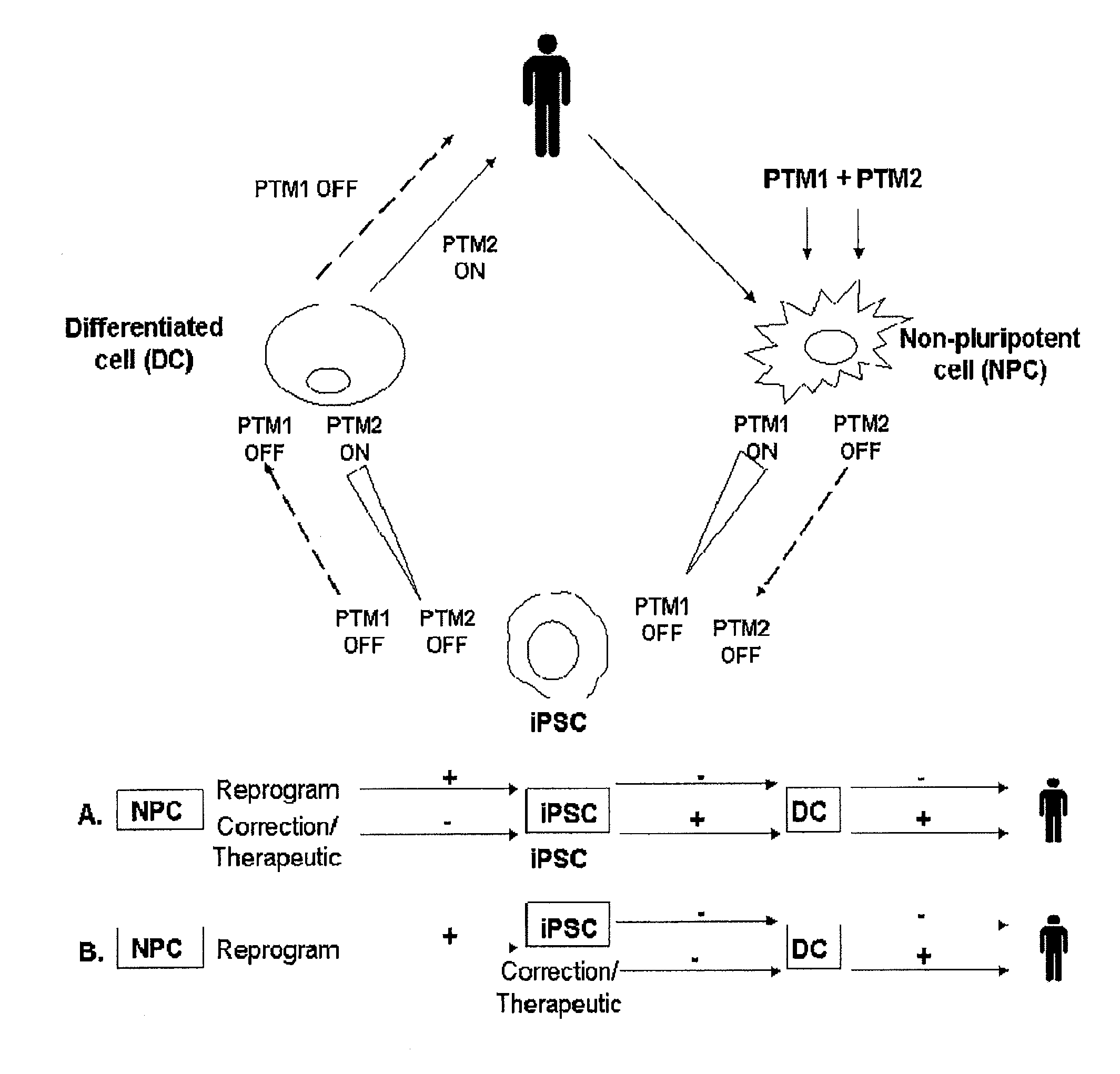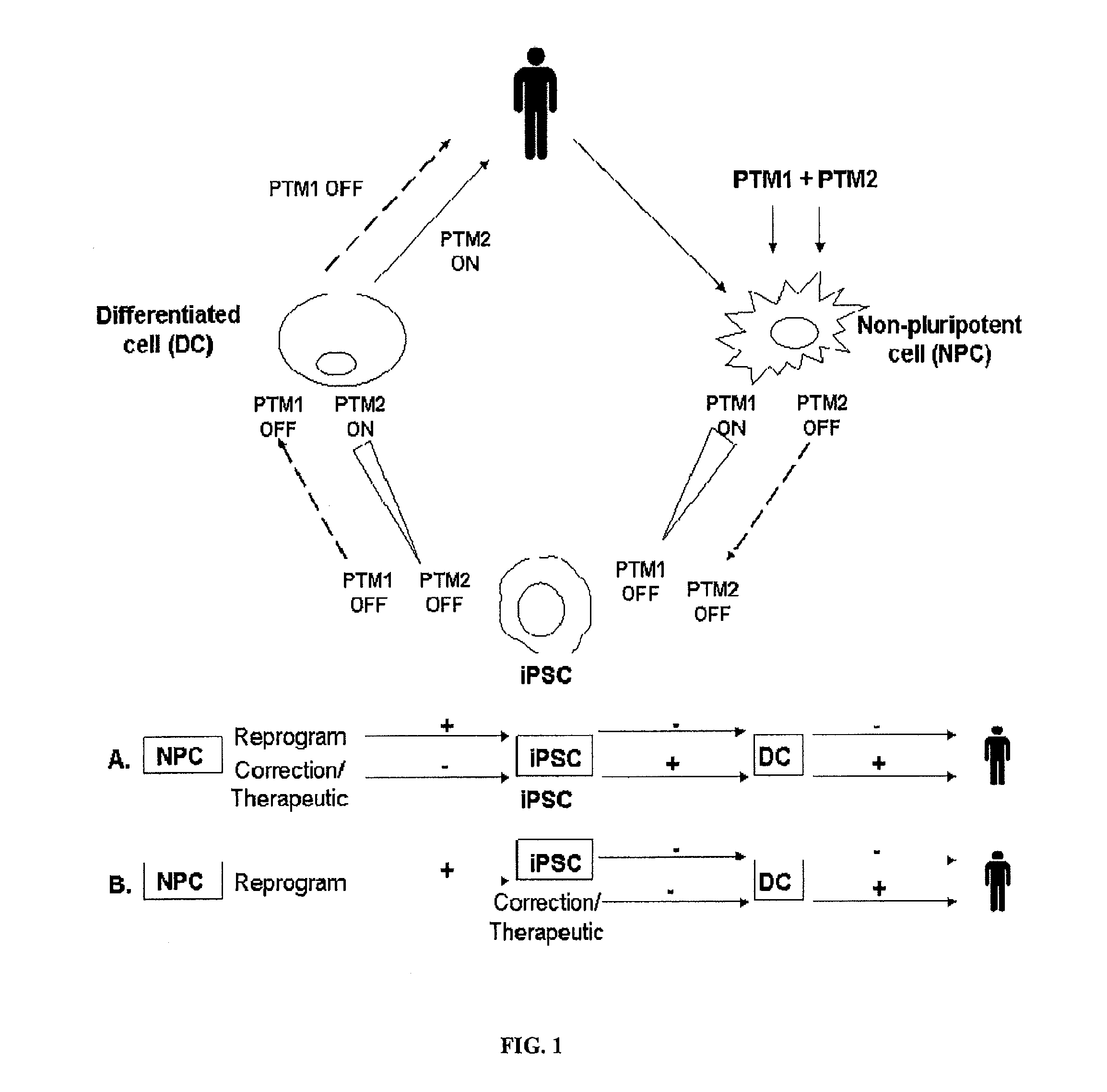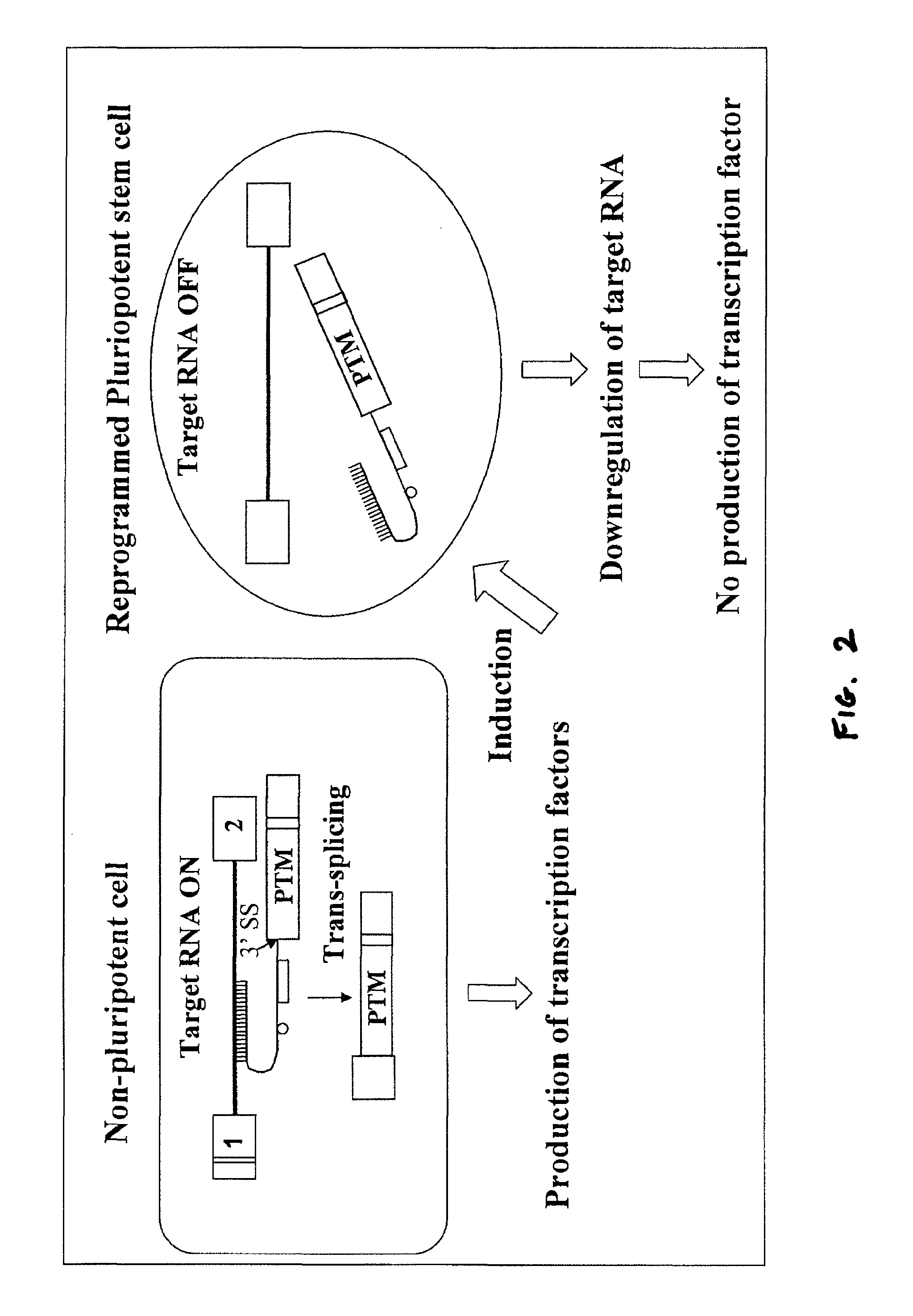Compositions and methods for generation of pluripotent stem cells
a technology of stem cells and compositions, applied in the field of pluripotent stem cell generation, can solve the problems of unfavorable outcome, limiting clinic clinical development, and consideration of donor cell graft rejection due to dissimilar immunological backgrounds,
- Summary
- Abstract
- Description
- Claims
- Application Information
AI Technical Summary
Benefits of technology
Problems solved by technology
Method used
Image
Examples
example 1
RNA Trans-Splicing Via Smart™
[0138]SMaRT™ involves trans-splicing between two RNA molecules: a pre-mRNA target endogenously expressed by a cell and an introduced RNA called a PTM (FIG. 2). PTMs are engineered RNA molecules that contain three functional domains: 1) A binding domain (BD) anchors the PTM to a selected intron region which serves as target, 2) a splicing domain with conserved elements that are required for efficient splicing, and 3) a coding region consisting of one or more exons of the cDNA encoding for a transcript to be trans-spliced. An important safety feature of trans-splicing technology is that the coding region of a PTM cannot be translated into a functional protein unless it is trans-spliced into an available endogenous target pre-mRNA. For iPSC derivation, PTMs for pluripotency factors will be trans-spliced into endogenous pre-mRNA targets that are preferentially expressed in non-pluripotent cells but not in iPSC. As the cells re-program into iPSC, the endogeno...
example 2
Strategy for PTM Based iPS Cell Generation
[0139]A specific example of a pre-mRNA target that can be used for trans-splicing of transcription factor PTMs is the RPL10 gene. RPL10 is expressed at about 5 times higher levels in fibroblasts non-pluripotent cells as compared to iPSC. This makes it a potential target that can be used to trans-splice transcription factor PTMs into. The transcription factor OCT3 / 4 PTM is constructed to contain a binding domain (BD) targeting RPL10 intron 2, a branch point (BP), a poly pyrimidine tract (PPT), a 3′ splice site (SS) and the OCT3 / 4 coding region lacking an initiating ATG codon. Trans-splicing of the OCT3 / 4 PTM will occur within the RPL10 pre-mRNA at intron 2 and will result in translation of OCT3 / 4 protein from the ATG initiating codon supplied by the RPL10 pre-mRNA (FIG. 3).
example 3
Derivation of iPSC using PTMs Coding for Pluripotency Factors
[0140]Primary skin fibroblasts cultures are established from the patient's skin biopsy sample and cultured for about 7 to about 14 days. 5×104 primary fibroblast are transduced overnight with a combination of four lentiviral vectors containing the PTMs for OCT3 / 4, SOX2, NANOG, LIN28 or OCT3 / 4, SOX2, KLF4, c-MYC or a combination thereof, at 2.5×105 to 5×105 transducing units of each vector, for 12-16 hr. Alternatively, by using bidirectional constitutive or tissue specific promoters, each vector will express two of the PTMs. The lentiviral vectors also have LoxP sites flanking the PTMs which can later be excised with Cre recombinase enzyme expressing vector, which provides an additional safety feature that ensures removal of the vector after reprogramming to the pluripotent stem cell stage is achieved. In an alternative strategy, the PTMs will also be delivered using IDLV vectors that will have impaired ability to integrate...
PUM
| Property | Measurement | Unit |
|---|---|---|
| time | aaaaa | aaaaa |
| temperatures | aaaaa | aaaaa |
| time | aaaaa | aaaaa |
Abstract
Description
Claims
Application Information
 Login to View More
Login to View More - R&D
- Intellectual Property
- Life Sciences
- Materials
- Tech Scout
- Unparalleled Data Quality
- Higher Quality Content
- 60% Fewer Hallucinations
Browse by: Latest US Patents, China's latest patents, Technical Efficacy Thesaurus, Application Domain, Technology Topic, Popular Technical Reports.
© 2025 PatSnap. All rights reserved.Legal|Privacy policy|Modern Slavery Act Transparency Statement|Sitemap|About US| Contact US: help@patsnap.com



